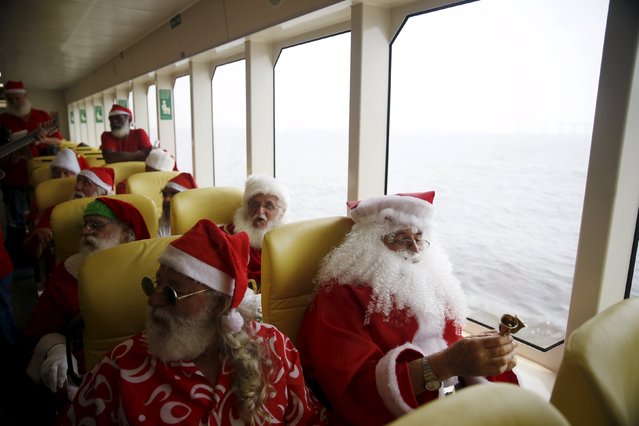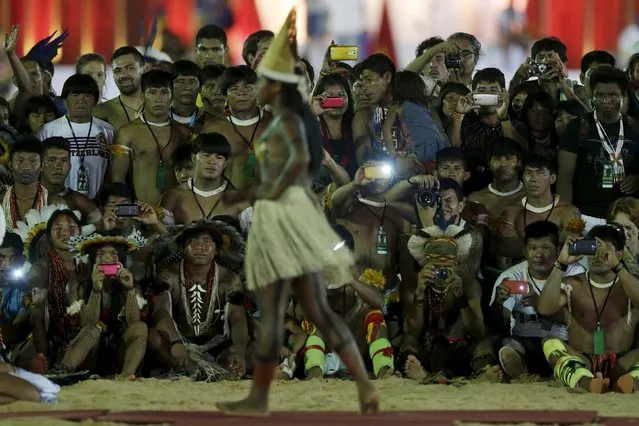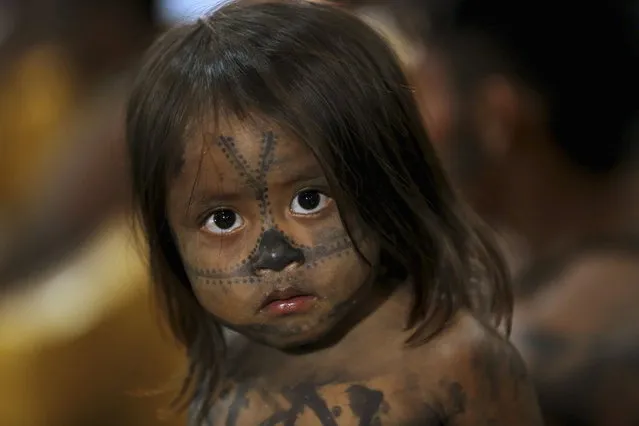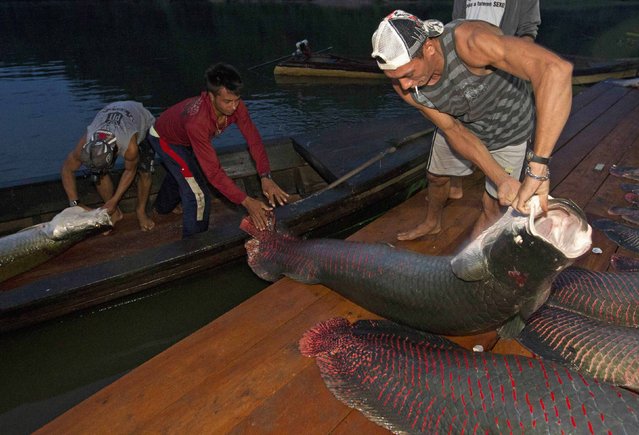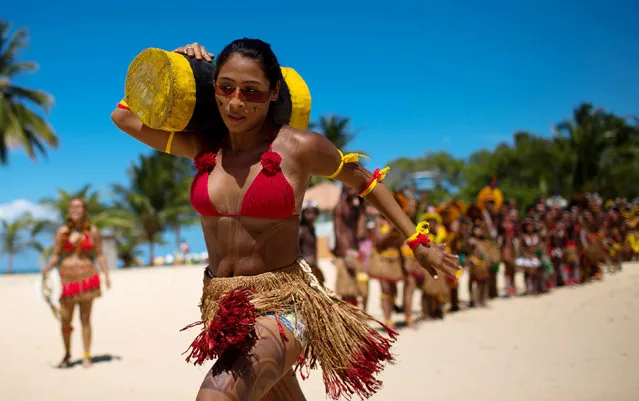
A native Brazilian competes in a tora competition, which is a race while carrying a log, during the Indigenous Youth Games of Pataxos nation in Santa Cruz de Cabralia, Bahia state, Brazil, April 18, 2016. (Photo by Roosevelt Cassio/Reuters)
20 Apr 2016 12:24:00,post received
0 comments

